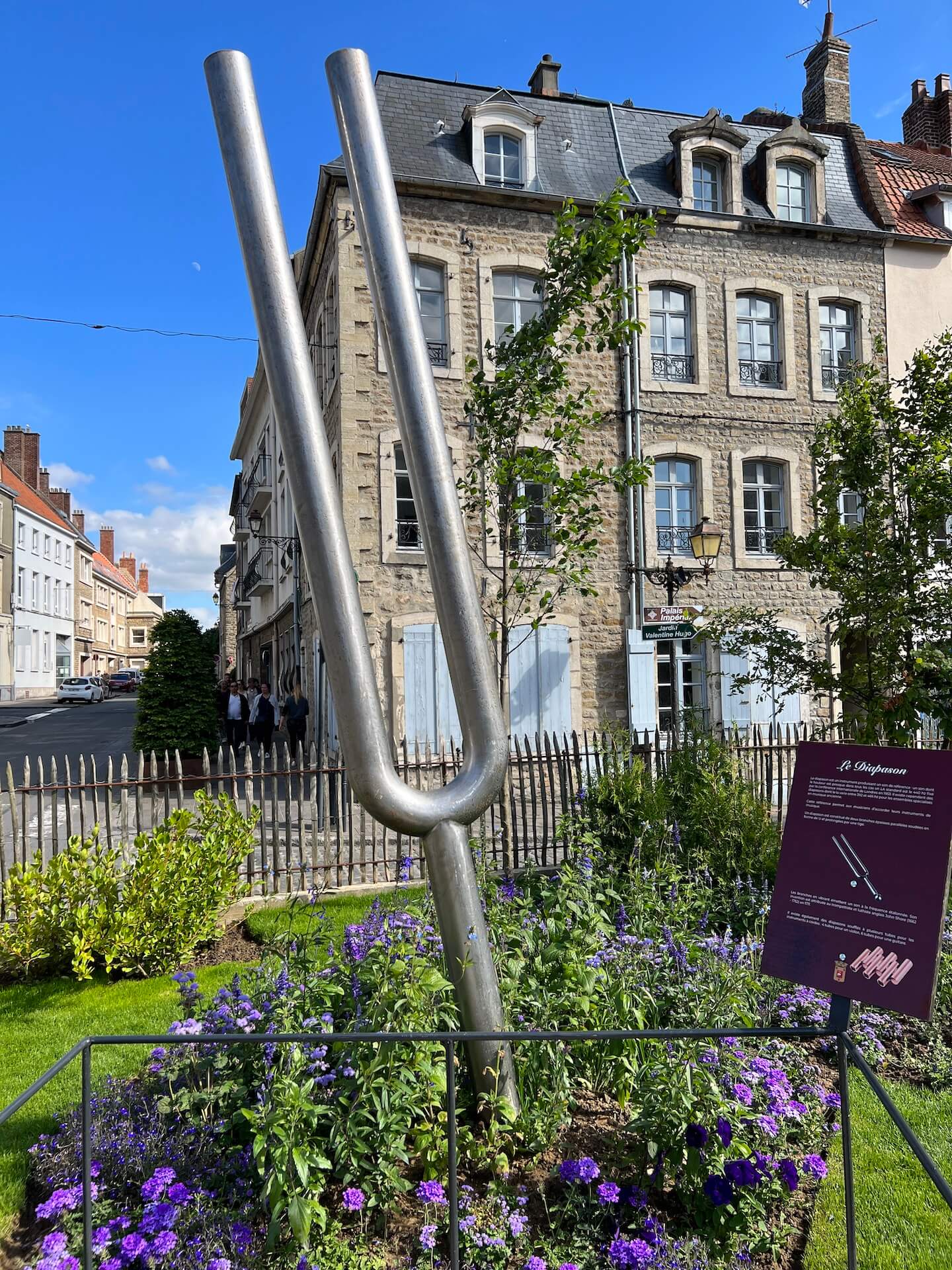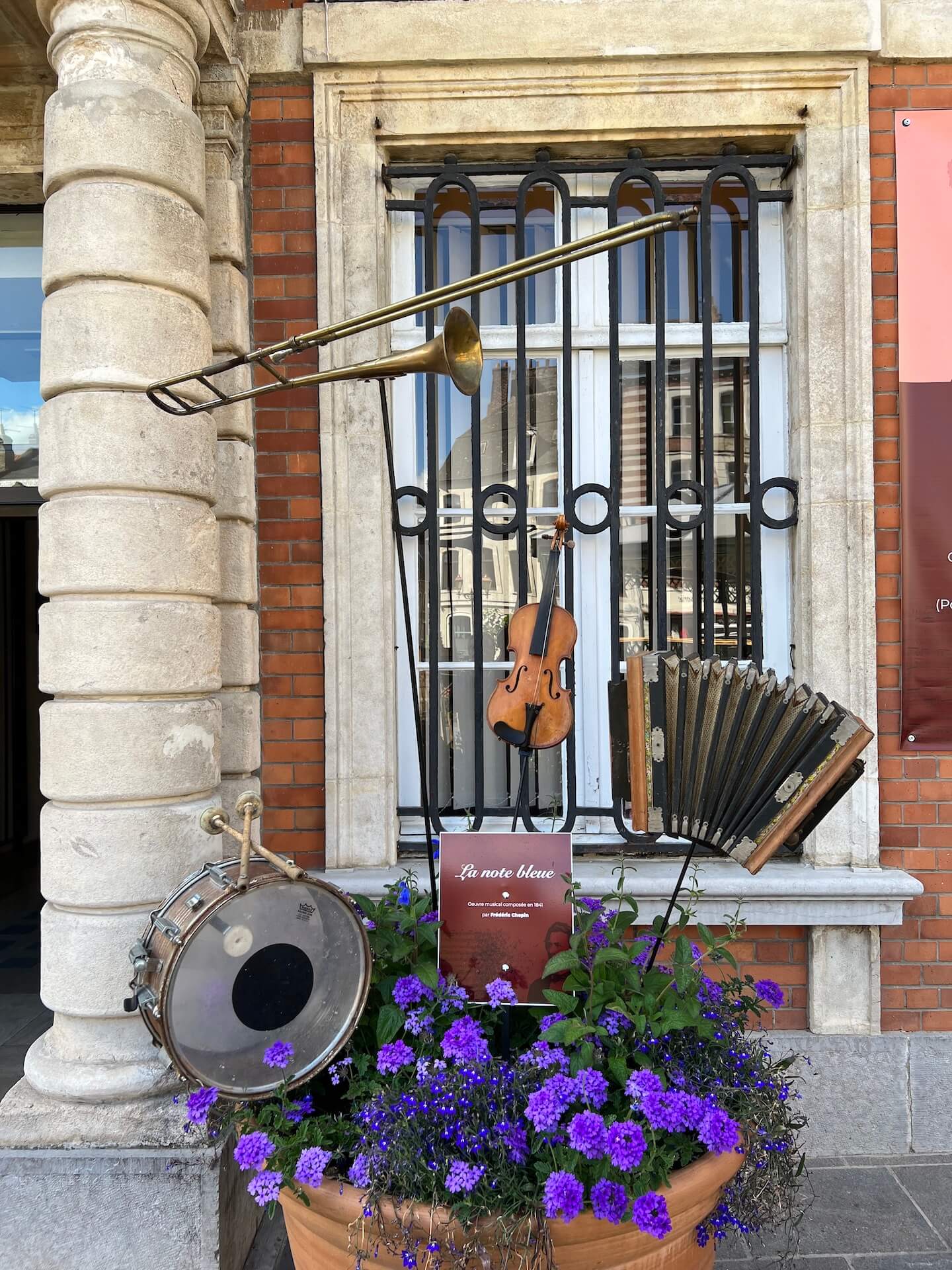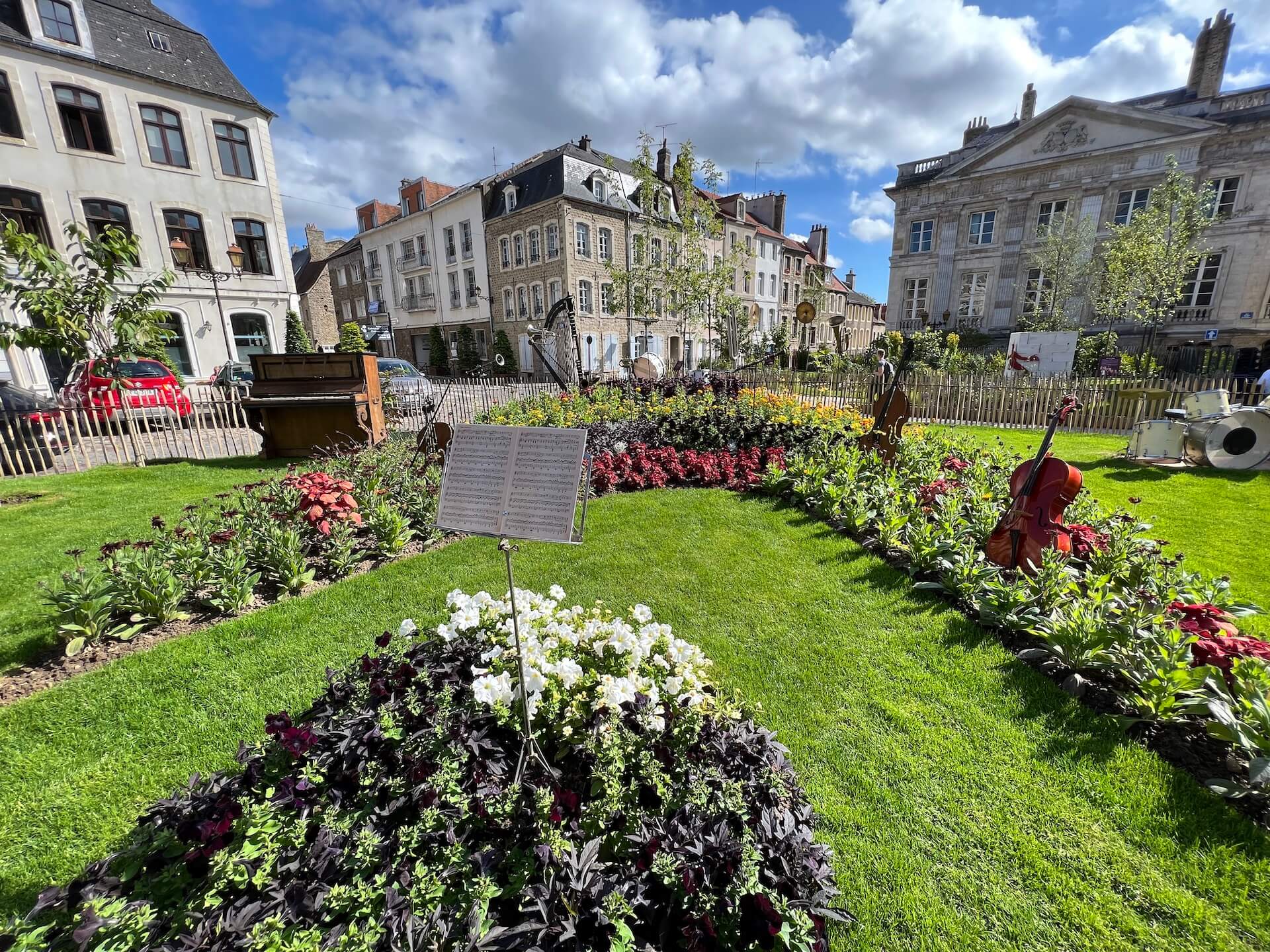The triangle
The triangle is an idiophonic percussion instrument “that emits a sound by itself, without a sound box”.
It is made from a circular metal bar bent at two points to create a triangle.
The musician holds it in one hand by a small cord and hits below with the other hand by using a metal rod.
The size of the triangle determines the pitch of the sound it produces. The smallest triangles are around 20 centimetres on one side and the biggest can be up to 30 or 40 centimetres.
The smaller the triangle, the more high pitched the note, and conversely, the bigger the triangle, the deeper the note.

The metronome
The metronome is an instrument emitting a signal to indicate tempo: the speed at which music should be played.
In 1696, Etienne Loulié (1637-1702) invented the first calibrated metronome, two metres in height and with silent beats, it worked with a weighted string. During several seconds, the balancing of a fixed weight on a defined string length always provided the same speed.
In 1812, the Dutch horologist Dietrich Nikolaus Winkel (1780-1826) invented the traditional metronome with an audible beat. It was fitted with a watch movement equipped with a calibrated pendulum whose beats determined equal durations. A mobile counterweight, sliding on the pendulum, allowed for changing the speed.
In the second half of the 20th century, electronic metronomes appeared, less cumbersome, more accurate and more reliable.

THE BANDSTAND
A bandstand is a unit of basic architecture, in the shape of a polygon or circle, topped with a roof.
In the 19th century and at the beginning of the 20th century, it was a building for entertainment typically found in town layouts for public squares or in parks.
It allowed the hosting of shows for artists or musicians for open-air concerts.

The tuning fork
The tuning fork is an instrument that provides a reference sound: a sound whose pitch is in almost every case an LA standard of 440hz agreed by an international conference in London in 1953. However, there are other tuning forks which vary between 392 and 466hz for ensembles specialising in ancient music.
This reference allows musicians to tune their instruments.
A tuning fork is made up of two thick parallel solid prongs in the shape of a U and extended by a handle.
When vibrating, the prongs emit a sound at a standard frequency. Its invention in 1711 is attributed to the English trumpeter and lute player, John Shore (1662-1752).
There are also air-based tuning forks comprised of several tubes for string instruments: four tubes for a violin and six tubes for a guitar.

THE CARILLON
A carillon is a musical instrument made up of bells that each emit their own sound. Carillons are found in church steeples, bell towers, belfries…
The word “carillon” comes from the late Latin quaternio, meaning “group of four”. A carillon is therefore a collection of at least four bells, however, the Word Carillon Federation only recognises carillons of at least 23 bells.
The bells are immobile and a hammer strikes them. The bell panels are actioned by a bell-ringer, either by means of a keyboard and later by pedals, or by pulling cords attached to their hands, elbows, knees and feet and moving in coordination.
These manual bell-ringing traditions tended to disappear with the electrification of the bells and the replacement of the ringers by electronic timers.
The biggest carillon in the world with 120 bells can be found in Portugal’s Mafra monastery.
The country with the most carillons with at least 23 bells is the Netherlands.
France has 63, notably in certain northern towns: Bergues, Bourbourg, Capelle-la-Grande, Douai, Dunkerque, Tourcoing, Cambrai…

« La note bleue »
The bed of blue flowers is an interpretation of the musical work “La note bleue” composed in 1841 by Frédéric Chopin (French-Polish composer 1810-1849), one of the leading romantic musicians of the 19th century.
His mistress, George Sand (1804-1876), whose real name was Amantine Aurure Lucile Dupin de Francueil, wife of the baron Dudevant, was a prolific writer, alluding to this blue note in chapter V of her work “Impressions and Souvenirs”:
“Our eyes fill slowly with soft tears matching the smooth waves caught by our ears. And then the blue note sounds and here we are in the blue of the transparent night”.
George Sand is shown here through one of her most famous works, “The Devil’s Pool”.*
Finally, the presence of water, although stagnant here and not running like a river, enables these few trout jumping out of the water and us to interpret “La truite” by Franz Schubert (German composer 1797-1828), composed in 1819 as a quintet in major, the only one with a piano.
*The devil is a reproduction of the devil of Cahors found on one of the towers on the Valentré bridge.

THE ORCHESTRA
A symphony or philharmonic orchestra is composed of four families of instruments:
- Strings: bowed string instruments. From the smallest to the largest and therefore the higher pitched to the deepest:
Violins (14 to 16), violas (12), cellos (10) and double basses (8).
- Woodwind: wind instruments that form a small section.
Flutes, oboes, bassoons, clarinets, saxophones – the numbers of which vary depending on the works interpreted.
- Brass: wind instruments that form a large section.
Horns (2 to 8), trumpets (2 to 4), trombones (2 to 4) and tubas (1 or 2).
- Percussion: timbales, xylophone, triangle, snare drum, cymbals, maracas…
The orchestra is led by a conductor and forms a semi-circle around him so he can be seen by everyone. The position of each music stand is identical in all orchestras. There also exists a hierarchy within the orchestra, as in each stand (1st violin, 2nd violin…).
The difference between a symphony and a philharmonic orchestra is vague and differs according to sources:
In the strictest sense, there is no difference between the two: a symphony orchestra could be created and managed by a philharmonic association and could therefore be called a philharmonic orchestra.
But according to certain sources, they differ according to their repertoires and therefore by their size. A symphony orchestra would have a more classic repertoire, bordering on romanticism, while a philharmonic orchestra would have a more modern repertoire that requires the addition of certain instruments and sometimes choirs.


